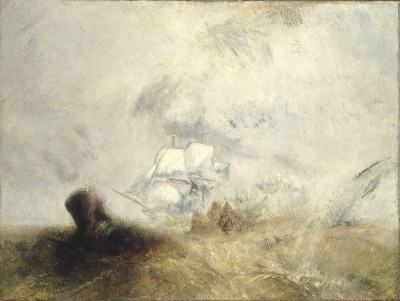William Turner in Budapest
The first monographic exhibition in Hungary of the painter J. M. William Turner will be hosted in The Museum of Fine Arts, in Budapest, from July 15th to October 25th.
The exhibition, named Turner and Italy
is arranged by outstanding British experts, and will come to Budapest
after being shown in Ferrara and Edinburgh, with its material slightly
modified.

Turner’s talent was recognized early
in his life, and the financial independence allowed him to travel
widely across Europe. His experience of the Mediterranean landscape
together with its conditions of light fundamentally changed his style,
making his palette lighter. Having visited Venice on three occasions,
Turner, like many other artists, was enchanted by its singular
atmosphere. Turner’s Venice-inspired watercolors filled with light,
together with his late unfinished color sketches, have become extremely
popular since through them spectators may trace the precedents of
abstract painting.
The artist’s career is presented in
chronological order, ranging from early landscapes to the almost
abstract pictures of his last period, their motifs dissolving into
patches of color.
The exhibition will present Turner’s
career in about 80 works presented in chronological order, ranging from
early landscapes to the almost abstract pictures of his last period.
 Turner was seventy years old when he first exhibited “The Whale Ship” at
the annual Royal Academy exhibition of 1845. The painting was praised
by some but derided by many; critics in both camps acknowledged that the
subject matter might seem elusive at first glance. English novelist
William Thackeray explained to readers of “Fraser’s Magazine”: “That is
not a smear of purple you see yonder, but a beautiful whale, whose tail
has just slapped a half-dozen whale-boats into perdition; and as for
what you fancied to be a few zig-zag lines spattered on the canvas at
hap-hazard, look! they turn out to be a ship with all her sails.”
Turner was seventy years old when he first exhibited “The Whale Ship” at
the annual Royal Academy exhibition of 1845. The painting was praised
by some but derided by many; critics in both camps acknowledged that the
subject matter might seem elusive at first glance. English novelist
William Thackeray explained to readers of “Fraser’s Magazine”: “That is
not a smear of purple you see yonder, but a beautiful whale, whose tail
has just slapped a half-dozen whale-boats into perdition; and as for
what you fancied to be a few zig-zag lines spattered on the canvas at
hap-hazard, look! they turn out to be a ship with all her sails.” 